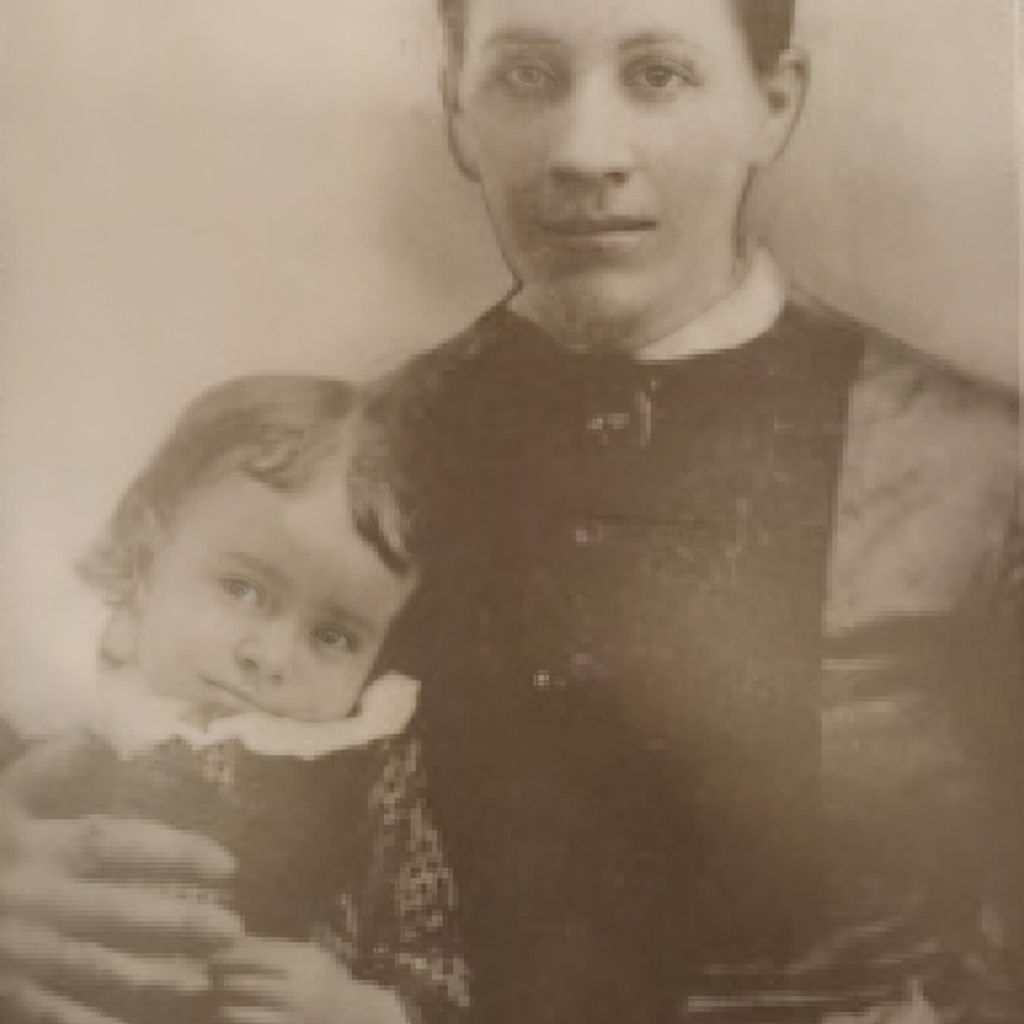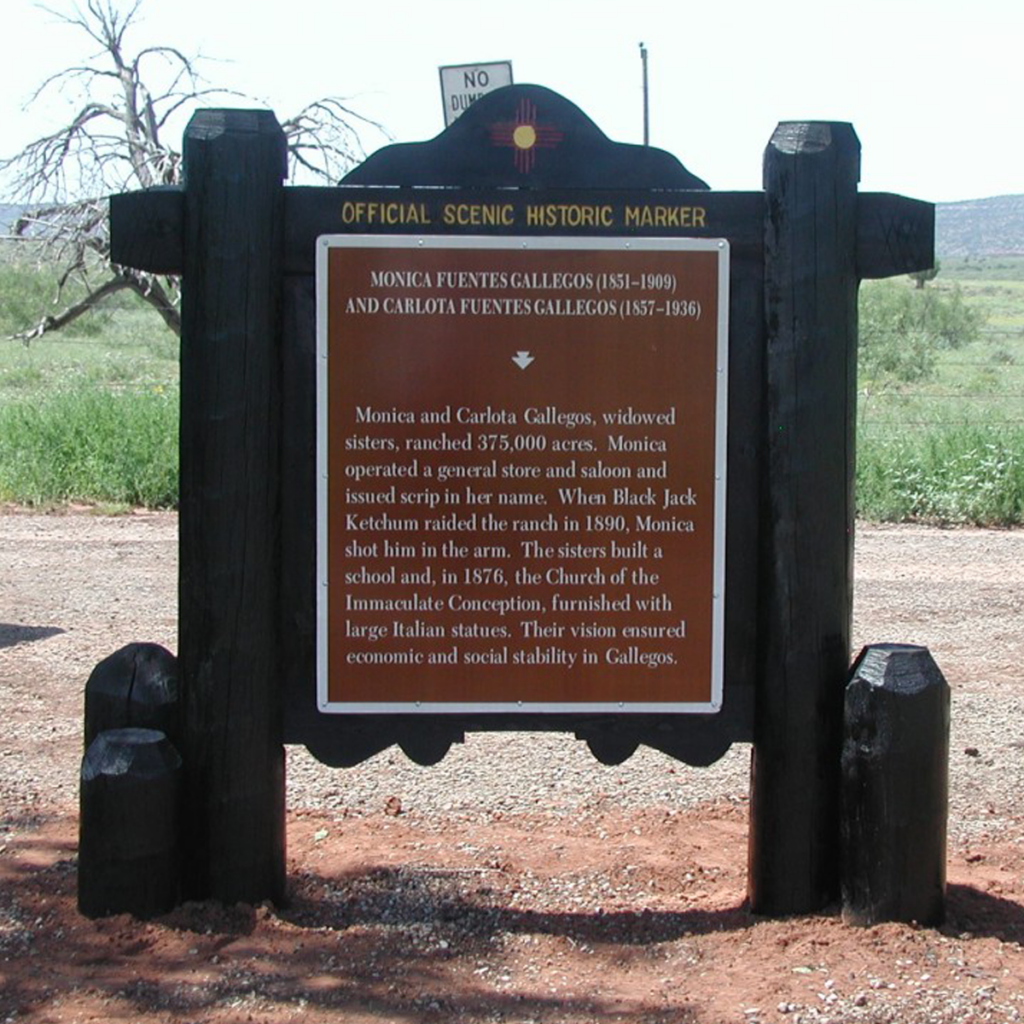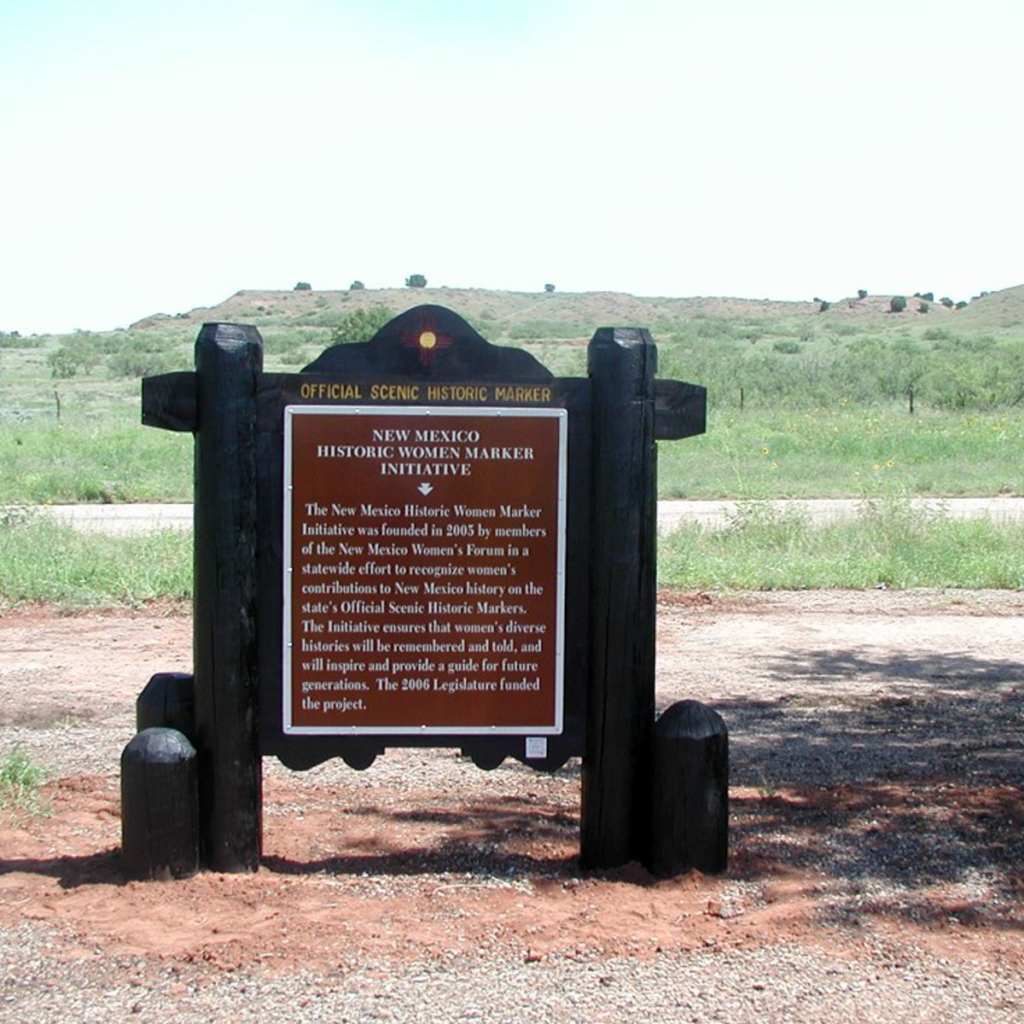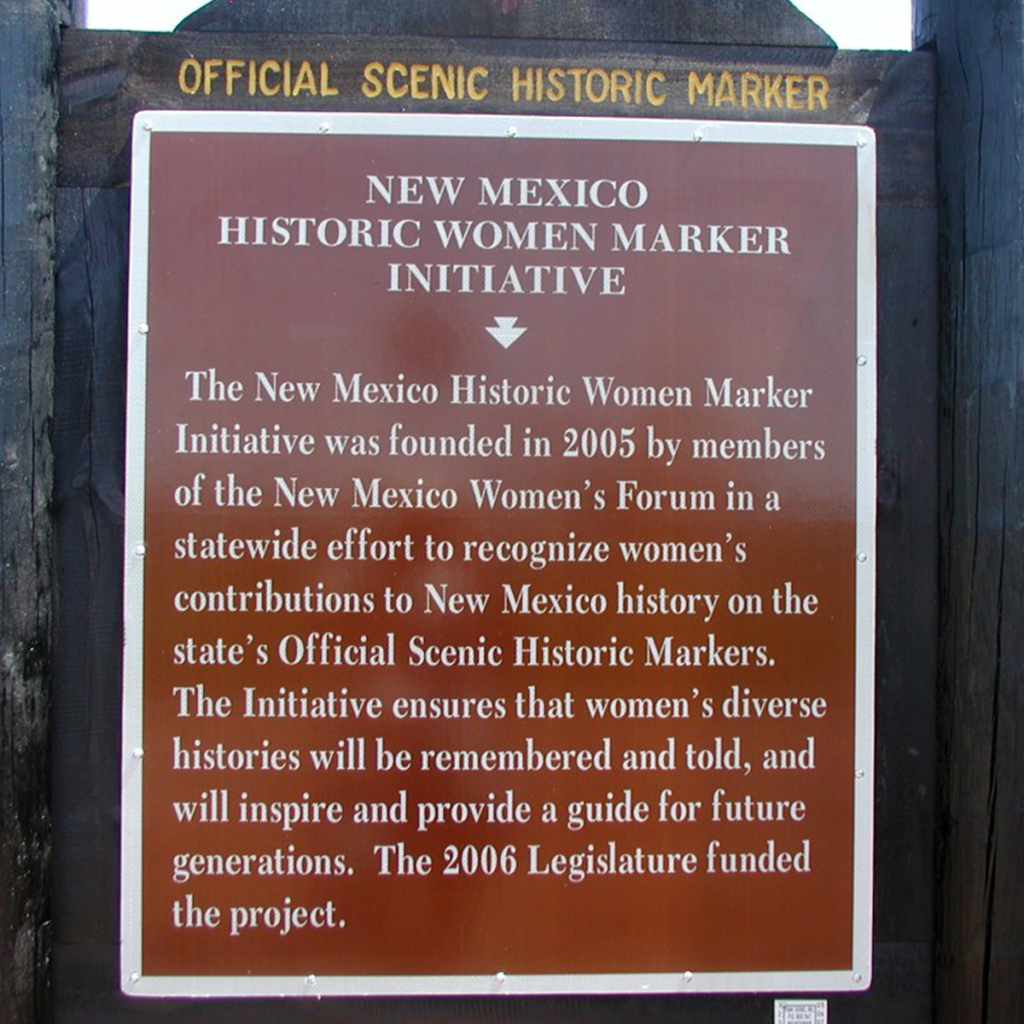Monica Fuentes Gallegos and Carolota Fuentes Gallegos.
Photo Credit: Courtesy of New Mexico Historic Women Marker Program. Courtesy of New Mexico Historic Women Marker Program. Courtesy of New Mexico Historic Women Marker Program.
Monica Fuentes Gallegos and Carlota Fuentes Gallegos
1851 1857 - 1909 1936
Harding County
The sisters helped establish Harding County, running the general store and saloon on their family ranch, and playing instrumental roles in the building of a church and school. The tough sisters are representative of many women on the plains who succeeded in building a future for their families and communities.
Monica and Carlota Fuentes were sisters who married the Gallegos brothers, Francisco and Emeterio, on the same day, November 27, 1872. The two brothers recruited and led a group of settlers to a place then called Rincon, Colorado, that later became known as Gallegos, New Mexico. The ranch grew to more than three hundred thousand acres tended by nearly 100 ranch hands. The Gallegos sisters, along with their families and early settlers who moved with them, helped establish Harding County.
Monica reared three children and helped raise others from ranch employees who lost their spouses. She was known for her toughness, which was displayed when the infamous New Mexico outlaw Black Jack Ketchum with two of his fellow travelers came to the ranch house. Pregnant with her third child, and with her two young sons at her side, she defended her family with a six-shooter, holding off the three men while she locked herself and the children in an upstairs attic. She succeeded in wounding Ketchum, reputedly the reason he eventually lost his arm. Early the next morning, she snuck out of the house and traveled barefoot to a nearby ranch camp to get help.
Monica also operated the ranch’s general store and saloon. She issued scrip in her name. She and Carlota were instrumental in starting and building the Immaculate Conception’s Catholic Church from 1876-1877. They furnished the church with large Italian statues that they had purchased and imported from Chicago. They also promoted and helped build a school—thus ensuring that the children in that remote area had an educational opportunity. Carlota had twelve known children, all of whom stayed on the ranch. Obviously, religion and school would be important.
Monica’s husband died in 1889, and Carlota’s husband passed away around 1910. Monica died in 1909, survived by her children and her sister, who lived until 1936. The year Monica died, a tornado destroyed the small adobe Gallegos church. Carlota was instrumental in the church’s reconstruction. Its present picturesque style dates to the 1912-14 construction. Carlota later had the church and the land it inhabited donated to the Archdiocese of Santa Fe on the condition that members of the Gallegos family could be buried inside the church. The last burial was for Monica’s daughter, Sara.
The Gallegos sisters, along with their families and early settlers who moved with them, helped establish Harding County. Their children and subsequent descendents have served on the county commission. Monica and Carlota Fuentes Gallegos are representative of many women on the plains who succeeded in building a future for their families and communities.
Sources:
Callon, Milton and C. M. Montgomery. “The Red Corner.” New Mexico Magazine, August 1964, pp. 12-15, 31, 35.
Criswell, Elvin. “Gallegos Ranch: Portrait of a Dynasty and its Matron,” New Mexico Magazine, June 1998, pp. 64-68.
Davis, Ellis Arthur, ed. The Historical Encyclopedia of New Mexico. Albuquerque: New Mexico Historical Association, pp. 818-19, 824, 826-27, 834-35.
Robolledo, Tey Diana eds. Nuestras Mujeres: Hispanas of New Mexico: Their Images and Their Lives, 1582–1992. Albuquerque: El Norte Publications/Academia, 1992.
Evans, Laurie and Perea, Martin. “ La Frontera del Llano Scenic Byway,” New Mexico Magazine, October 2004, pp. 68-69.
Personal Communication. Alberto Gallegos, July 24, 2007.
Directions:
Monica Fuentes Gallegos and Carlota Fuentes Gallegos
Harding County
Entrepreneur |
Statehood (1912 - present) | Territorial Period (1848 - 1912) |
Northeast










